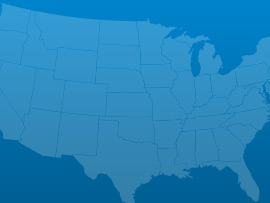Yesterday, Georgia voters went to the polls and voted on, among other things, whether to impose
a new 10-year Transportation Special Purpose Local Option Sales Tax (T-SPLOST).
The referenda offered Georgians an opportunity to vote for a one percent regional sales tax to fund transportation improvements in every corner of the state. If it had been approved across all twelve regions, the sales tax would have generated an estimated $18.67 billion over a 10-year period, which represents a significant investment in Georgia's transportation infrastructure.
Unfortunately, out of the twelve economic development regions, only three, Regions 7, 8 and 9, the Central Savannah River, River Valley and Heart of Georgia regions respectively, passed the referendum. The good news is that these three regions represent an estimated $1.83 billion dollar investment in infrastructure. The bad news is the other nine regions, including the metro Atlanta region, all rejected the plan, leaving a potential $16.8 billion of infrastructure projects unrealized.
Governor Nathan Deal's office told The Atlanta Journal-Constitution he would now take a central role in transportation planning for the state's metro areas, and he would not support a sequel to Tuesday's referendum.
Only time will tell the future of transportation in Georgia.
Leave a Reply







I recall reading some ASCE info., maybe even a blog post, that when people have the chance to vote for infrastructure improvements, the votes generally support the improvement. The many variables about why some are willing to pay more for infrastructure and others are not likely varies with as many people who have a choice. Not everyone wants a high performance sports car or a Cadillac and likewise some folks may be content with basic infrastructure, waiting two or three cycles to get through an intersection, and living in a place that is behind a flood wall/levee and also lower than the nearby river/lake/waterway.
This past year I worked in the Hampton Roads area of southeastern Virginia. The governor proposed tolls for bridge & tunnel repair, maintenance, & new construction. There did not seem to be much support at all for the tolls. Traffic congestion is a major issue in the area though.
In my hometown of Fort Wayne Indiana, a referendum passed in May to increase property taxes to support school construction & renovation with an additional $119 Million. A somewhat similar issue was defeated two years ago in the same school district when the amount was $500 Million. A nearby county school district had an $89 Million proposal defeated in the same election that the city school district proposal passed.
“Nobody likes paying taxes, but many people are willing to pay more if they are confident of getting something of equal or greater value in return …” This news story discusses the issues – mostly from a marketing/sales/promotion point of the school district.
http://www.news-sentinel.com/apps/pbcs.dll/article?AID=/20120517/NEWS/120519678/0/SEARCH
Conveying the value of infrastructure investments to the public is the key. When we jump on board with infrastructure spending bills that in fact are only 1/5, 1/8, or 1/10 for infrastructure but really about something else, such confidence is not conveyed to the public.
Is an amount of infrastructure spending for the stimulus bills known? Are these amounts factual? http://www.economist.com/node/17311851 indicates just 1/5 of stimulus was for infrastructure but I recall reading something months ago that suggested the amount was about 1/8.